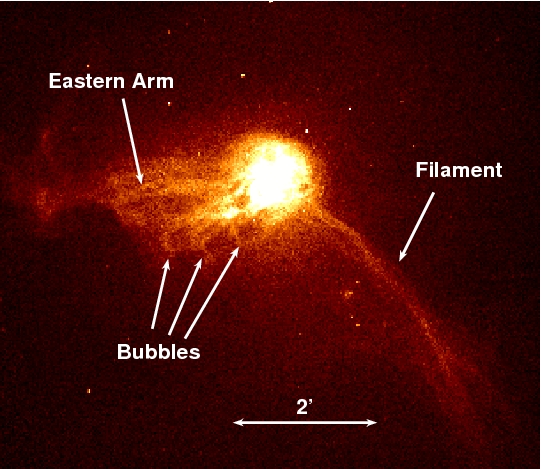

Filaments and Bubbles
One of the unique characteristics of M87 are the long narrow filmentary structures that are pronounced in the 0.5-1.0 keV band images. The largest X-ray filamentary features are the eastern and southwestern arms which have clear counterparts in the 90 cm radio image.


The left panel shows the soft X-ray image with the Eastern arm and Southwestern arm (labeled as "Filament"). The corresponding radio structures are seen in the right panel. The southwestern arm counterpart is a twisting structure that appears to wrap around the very narrow X-ray filamentary arm.
The eastern radio arm shows the classic mushroom shape of
a buoyantly rising bubble. The corresponding X-ray structure is less
regular and appears to consist of several long filaments within the
stem of the mushroom cloud.
The radio image also shows two large regions of low surface brightness
to the north-northeast and south-southwest. These are probably the
oldest radio structures and represent buoyant plasma bubbles that have
risen high into the gaseous atmosphere and appear round in projection
but are very likely flattened pancakes.
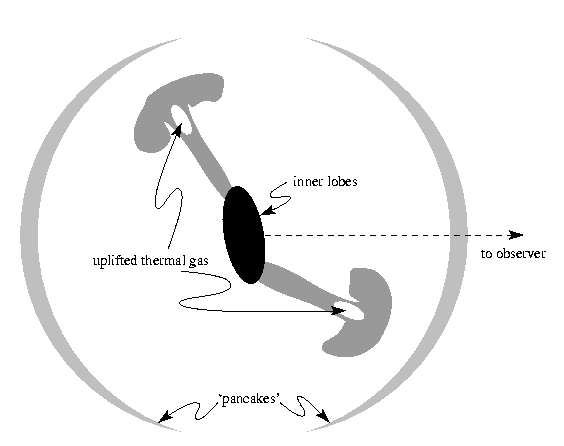
The schematic model of the structures in M87 (above) shows the flattened bubbles, the mushroom-shaped bubbles, and the radio bright central core.
The rise of plasma bubbles of relativistic plasma in the atmosphere of M87 have been simulated. In a stratified atmosphere (darker blue is cooler gas) the temperature simluation shows a rising relativistic bubble (white) that entrains and uplifts a column of cool.
Similarly, the simulation of the relativistic plasma shows the rising mushroom cloud with its stem.
On smaller scales, the eastern arm appears to be a series of bubbles that are "leaking" from the central cocoon. In the figure below (left) the red outlines indicate a series of cool filaments that could represent a series of buoyant bubbles. The first one (red ellipse) corresponds to a radio emitting plasma bubble. The right panel indicates several regions which were studied to determine the cross sectional scale of the filaments (see next figures).
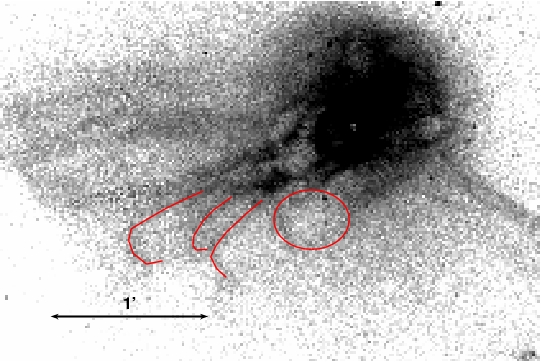
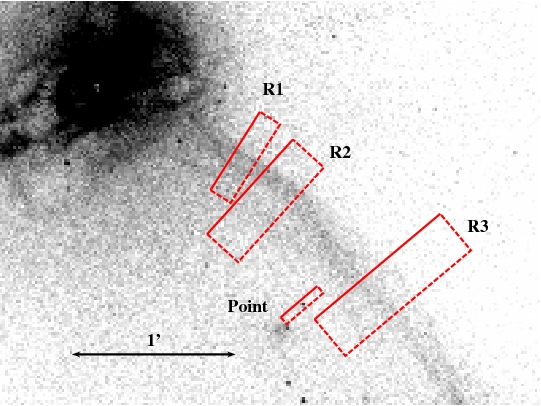
The 0.5-1.0 keV projections across the southwestern arm in the regions marked in the previous figure. The figures show the complex structure along the arm. a) The first panel (region R1) shows two peaks which may arise either from two separate, close, filaments or from the limb-brightened edges of a cylindrical filament. b) The second panel shows (region R2) a continuation of the southwestern arm consisting of two broad filaments. c) The third panel (R3) shows three resolved structures (and a point source below, labeled ``Point'' (in the figure above). d) The final panel shows a projection across a boundary of the outer bubble of the series in the eastern arm along with a scaled projection (lower histogram) of a point source 4' from the nucleus of M87, twice as far as the eastern arm filamentary region.
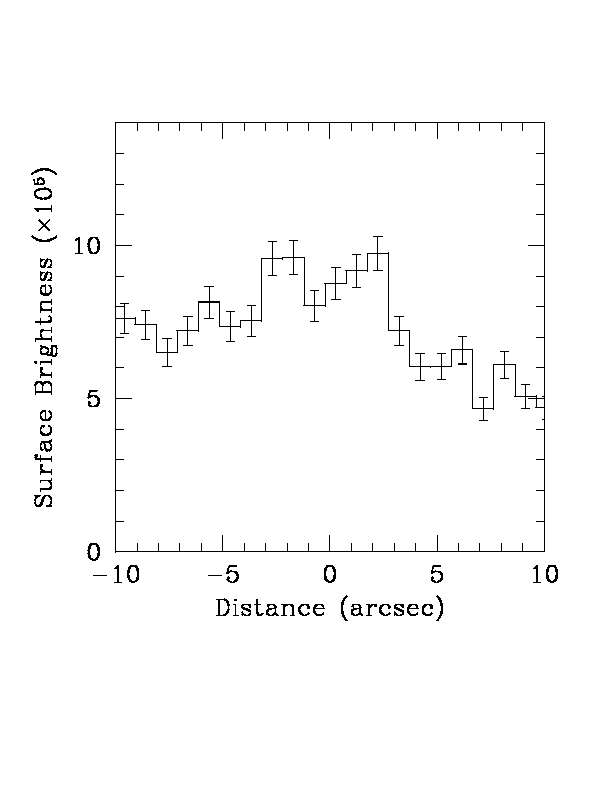
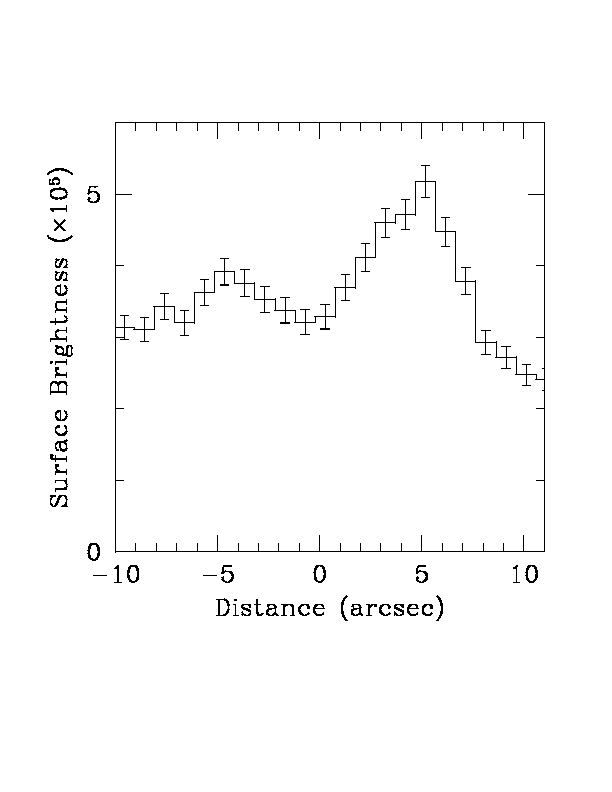
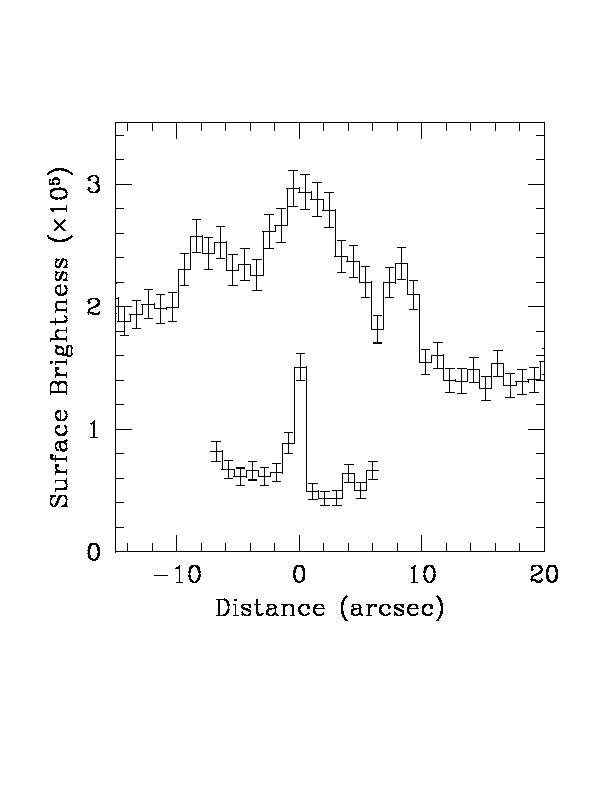
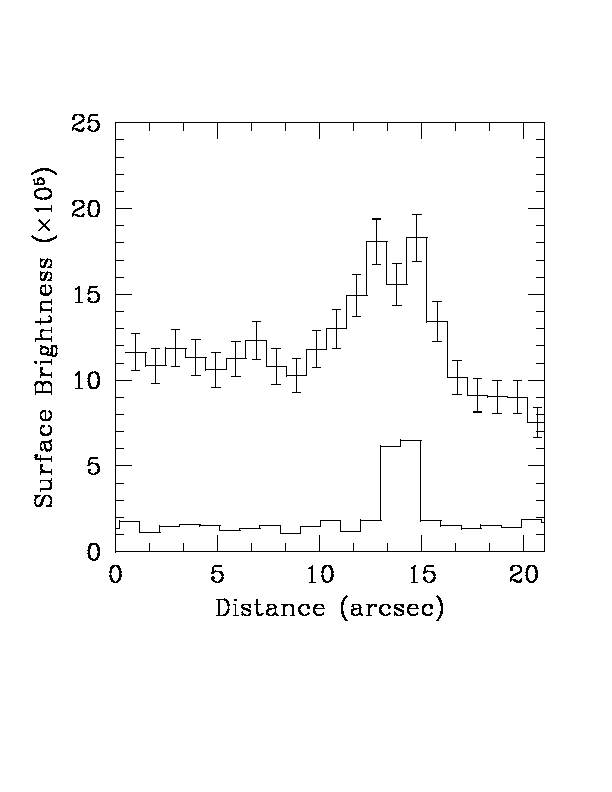
The final figure of this section shows the relation between the shock and the various buoyant bubbles. In the left panel, to enhance the faint features, an azimuthally averaged profile has been subtracted from the original X-ray image. The shock is labeled in relation to the large scale arms and buoyant bubbles also seen in the adjacent 90 cm radio image (shown at an identical scale).
